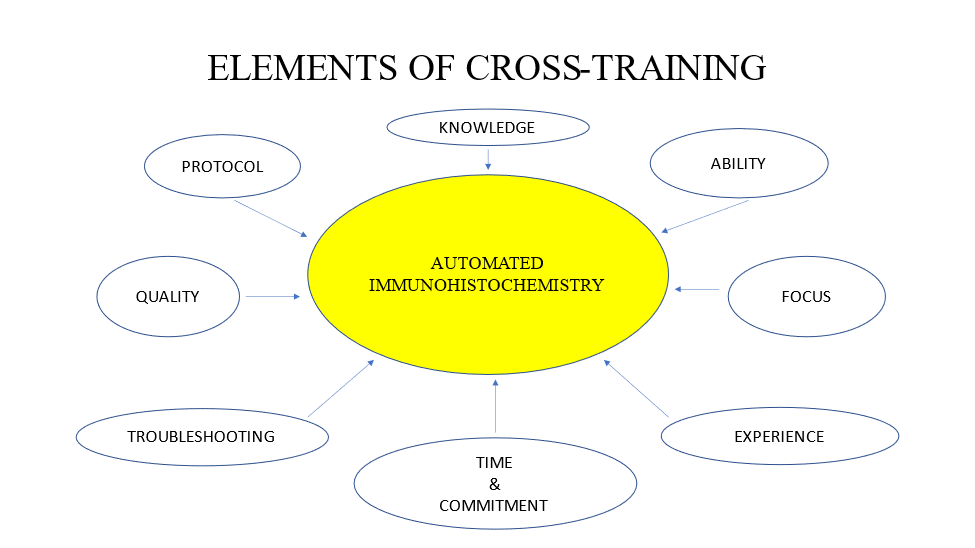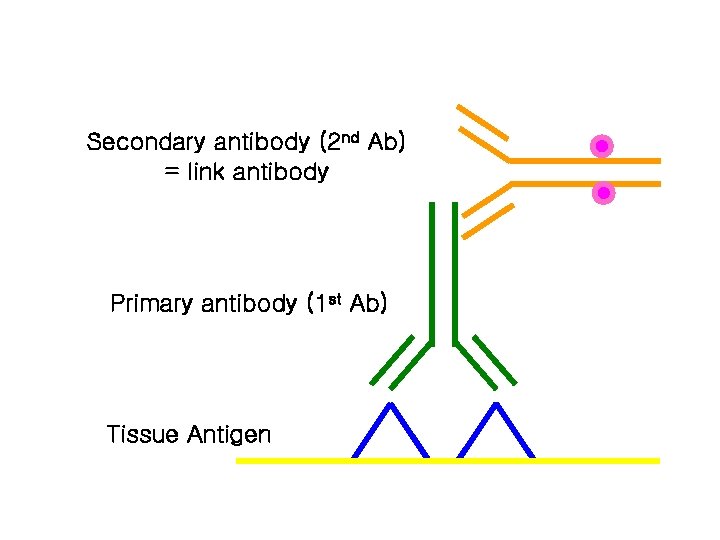In Part 1 of this series, we discussed workplace silos as the first major impediment to optimized workflow. Silos only superficially cover vital tasks or stations within the workflow process, such as accessioning, embedding and microtomy, special stains and immunohistochemistry, frozen sectioning, etc., because they (silos) cause a tremendous liability in reducing the competency and skill sets in each area to only one or two individuals. These types of laboratories have a high frequency of working in crisis mode because of the inevitability of the one or two individuals being out from work due to sickness, vacation, or other. Labs may have someone they can abruptly throw into that area, but their competency and proficiency is severely challenged because they have not worked in that area for some time, if ever.
Cross-Training (CT) should always be adopted in the laboratory to eliminate this liability of limited competency in resources. Cross-Training for competency does not stop with the elementary effort of just showing someone how to load specimens on a piece of equipment and hit ‘run’. Successful CT in laboratory disciplines requires careful planning and a systematic approach towards employee development.

The module above demonstrates key elements of CT, using the example of preparing someone to cover the Immunohistochemistry Section and operate an automated stainer. This module can be applied to most disciplines in the Histopathology laboratory (manual or automated); those that generally become silos because of their specialty.
Elements
Knowledge – This requires teaching a basic understanding of immunohistochemistry and how this is applied to the instrumentation, as opposed to simply showing someone how to ‘run a machine’. Basic understanding of the mechanism of staining, i.e., an antibody forms on the tissue; a specific primary antibody links with the tissue-bound antibody; a secondary antibody links to the primary Ab; an enzyme linked-chromogen bound Ab links to the secondary Ab; a substrate solution produces a color reaction in the tissue. The image to the right illustrates this linking aspect in a 2-step process. This basic understanding is vital when it comes to Troubleshooting and resolving staining issues.

Protocol – demonstrating the step-by-step protocol, with the trainee shadowing the trainer, is key to showing critical steps and technique. After demonstrating this several times, the trainee now becomes the performer with the trainer closely monitoring and providing immediate input. This allows the trainer to emhasize two other elements; Focus: an intense, non-distracted scrutiny on the protocol, and, Quality: the measure of optimal performance. Instead of just rushing through a procedure to get it done, there must be a focus on perfection and the quality of the product produced. This is the ultimate goal in working with patient specimens to facilitate accurate diagnoses.
Experience sharpens and enhances ones Ability. Trainees must have an opportunity to develop through frequently working in this discipline, still with supervision from the primary staff member (trainer). It is futile to train a person for an initial brief period, and then never call on them again until a crisis emerges. Employees must be developed, not just trained.
Time & Commitment – This is the vital key that is required in many respects more from the laboratory than the trainee. For CT to be successful, supervisors, managers, trainers; all must be commited to devoting the time and resources necessary to ‘develop’ employees. This is the key element that ensures success and produces a fully competent technician able to independently cover workstations and assignments, not just in times of crisis, but also in routine rotation schedules. Trainees must be allowed to break away from the routine assignments such as embedding and microtomy, and focus, learn, and develop, without the pressure of running back and forth trying to handle the daily workload. If time isn’t given for the employee to concentrate and focus on learning ‘and’ mastering a new discipline, then the CT is severely compromised and often times results in wasted time producing a minimally competent worker unable to work proficiently. They do nothing more than fill a space to provide crisis coverage and are a liability to the lab delivering quality patient care.
Laboratory managers often become victims of their own silo perspectives. The responsibility to accomplish the day to day workload puts pressure on managers to just ‘get the work out’. They oftentimes enter into a silo mentality where the crisis of the moment causes them to focus solely on getting through the day by making sure that ‘someone’ can move to the silo and ‘cover’ that area for the moment. Competency and proficiency becomes subordinate to ‘coverage’. Thus, the time and commitment necessary for successful CT is sacrificed in lieu of giving someone just enough for them to ‘get the work out’. What becomes left is the scenario of just showing someone how to load and unload a machine.
While in a crisis it is difficult to see beyond the crisis, however, the benefits of developing your own CT program far outweigh the temporary sacrifice of time and resources. Cross-Training is the only viable workflow solution to move labs out of frequent crisis mode into successful management of manpower resources, even in times of staffing shortages. There are laboratory, employee, and team advantages to succesful CT. Multiple trained employees can be utilized to cover workstations (laboratory advantage); employees have a greater understanding of various functions of the lab and become more valuable as multi-functional technicians; and employees develop comradry and team mentality in working together as a unit to provide patient care. Finally, Cross-Training can significantly reduce and even eliminate lab silos through the ability to now set up duty assignment rotations. This keeps the staff fresh, motivated, and fosters interpersonal collaboration between employees. When considering that increasing work volumes and staffing shortages are a sign of present day healthcare, Cross-Training allows us to manage our environments and respond to any workflow challenges that may arise, and still provides optimal quality patient care in the laboratory.
References:
- Brown, S., ‘Silo Conditioning’ , Workshop in Professional Development Series, Lab Management Consultants, 2019.
- Brown, S., ‘Elements of Cross-Training Module’, Professional Development Series, Lab Management Consultants, 2021.
- Hyland, S., Why Cross-Training in Healthcare Is Important, www.signatureperformance.com, 2020.
- McKay, M., ‘Cross-Training in Business’, smallbusiness.chron.com
- Reh, F.J., ‘Cross-Training Emloyees’, thebalancecareers.com, 2019.
- www.bing.com, Image: Immunohistochemistry Secondary Antibody-2nd Ab link Antibody.
